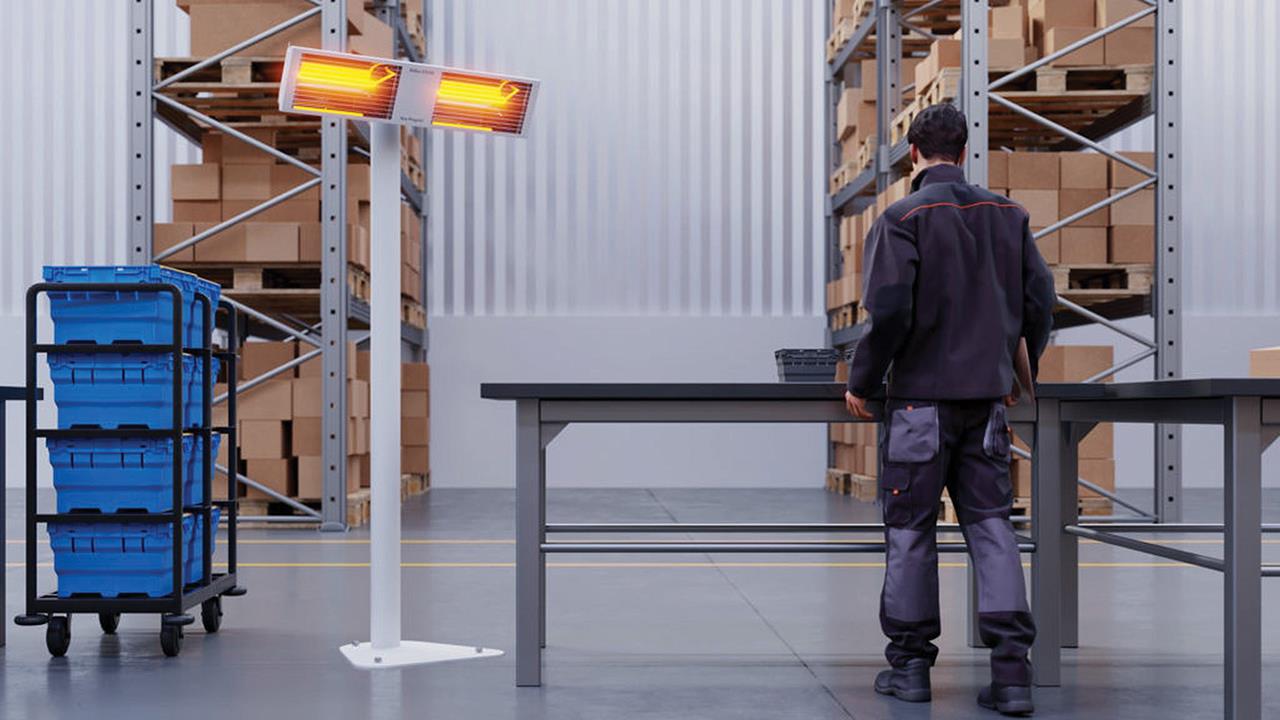

The recent hikes in energy prices have placed an onerous burden on facilities and property managers aiming to provide comfortable working conditions in large spaces. Traditional heating methods rely heavily on heating the entire space, but this can be very costly and extremely wasteful, for a number of reasons.
Firstly, larger spaces are often sparsely populated, so a great deal of ambient heat is wasted in heating areas that are rarely or infrequently used.
Secondly, bringing a large space up to a comfortable temperature takes time, meaning that heating systems often need to be switched on well in advance of the arrival of human occupants.
And, thirdly, there is a huge potential for heat loss in industrial settings. Larger buildings such as warehouses are designed to facilitate the delivery of goods by large vehicles, meaning that access doors, and cargo or loading bays in particular, are frequently used throughout the working day, creating large openings in the building envelope. This, naturally, allows for significant and rapid heat loss, even in an otherwise well insulated building.
Finally, once sufficient heat has been generated and maintained, there will often be a long cool down period after people have left the premises, during which time the heat is neither required nor used.
An alternative to this approach is local heating, in which only specific, occupied areas are targeted with a heat source. With many traditional heat sources, a small amount of heat will quickly dissipate. Newer technology is therefore needed for this approach. SunSwitch short wave infrared products, for example, allow highly targeted heating of people, rather than premises.
Infrared heaters do not heat the air or the whole space of a property. Instead, they transfer warmth to the human occupants in radiated form. The effect on the person is similar to stepping into warm sunlight, and is almost as instantaneous. As soon as the infrared heater is switched on, its effect will be felt by its target.
This means that pre-warming of the working environment is no longer necessary. It also means that, after work, the heater may be switched off and the effect of it will no longer be felt. There will be no significant build-up of heat to dissipate wastefully after the workforce has left.
Infrared heaters can be specifically directed to the areas in an industrial unit where most activity is carried out. Heaters will therefore be directed at staff at work on packing areas, work benches, inspection areas, and production line stations. The areas that people rarely visit do not need to be heated. These might include shelves where spare parts are stored. The technician might quickly visit these areas to gather materials or parts before returning to their main workspace. There may be no need to heat these areas at all, but, if desired, an infrared heater can be located at a more frequently used area, but only switched on while occupied.
For this local heating approach to work successfully, it is essential for the infrared heater to generate sufficient heat on demand. Medium and long-wave infrared heaters do not generate sufficient heat to provide comfort heating at the touch of a button. The principle is similar to medium and long-wave radiation from the sun, each of which has less ability to travel through space and is dissipated and filtered by the Earth’s atmosphere.
Short-wave radiation, however, is distinctly felt and enjoyed. Short-wave infrared, as used in SunSwitch heaters, is a completely safe form of radiated heat and can be precisely targeted.
This targeted heating approach, which eliminates significant heat loss and unnecessary pre-heating and post-work cooldown periods, delivers significant energy savings. In a large workshop or warehouse setting, savings of up to 70% can be made in energy consumption.
Specification of short-wave infrared heaters requires a completely different approach from traditional heat loss calculation methods. The pattern of usage of each area of the property is mapped and the correct strength of heat emitter specified to warm the end-users of each habitually occupied space.
Most new users of this technology will require specification advice and guidance for their first few applications; this will be readily available from the manufacturer.
If you'd like to keep up-to-date with the latest developments in the heating and plumbing industry, why not subscribe to our weekly newsletters? Just click the button below and you can ensure all the latest industry news and new product information lands in your inbox every week.